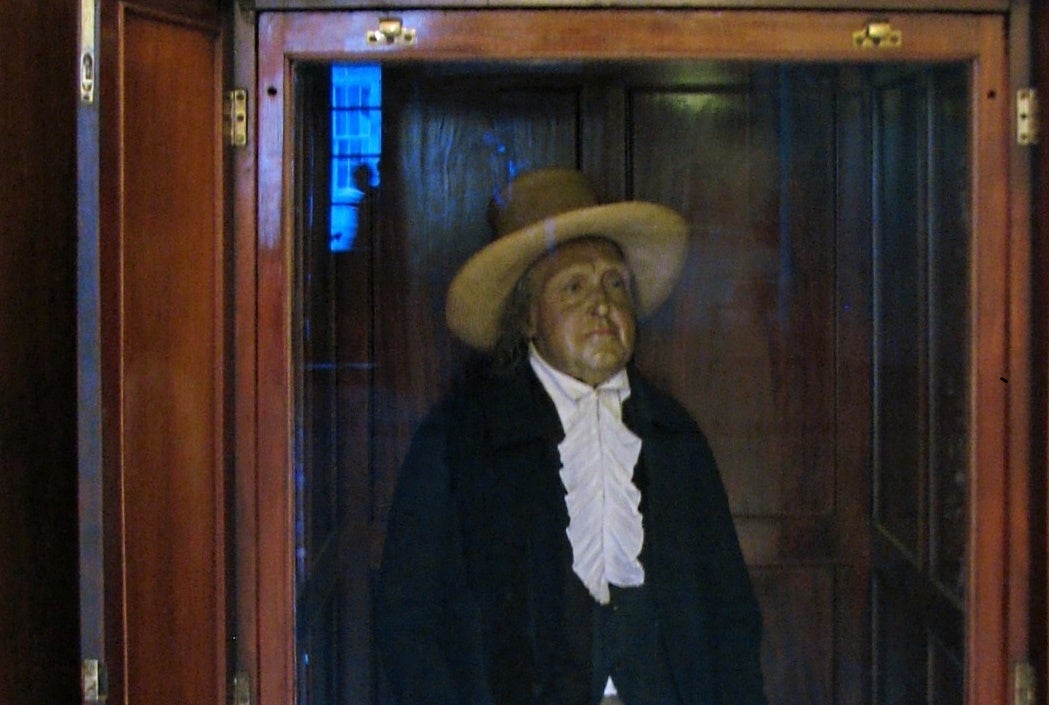There’s a curious display in a glass-fronted cabinet at University College London. It’s Jeremy Bentham (1748–1832), the philosopher of utilitarianism, social reformer, jurist, and “spiritual founder” of the college, the first institution of higher education in Britain for the “middling classes.” Seated with his walking stick, Bentham wears his best Sunday clothes. In this condition, he attended UCL’s 150th anniversary council meeting in 1976: the minutes recorded him “present but not voting.”
Now, don’t let that wax head fool you. This actually is Jeremy Bentham, or at least some of his earthly remains. Inside his own clothes is his preserved skeleton. His actual head, shrunken and smoky-looking after the preservation process and all the subsequent years, is now in a safe at the Institute of Archaeology in London.
Bentham gave us a name for this curiosity, an “auto-icon.” He wanted mankind to “reap some small benefit by my decease, having hitherto had small opportunities to contribute thereto while living.” He wrote that when he was twenty-one; two months before his death at 85 he confirmed his wishes.
One factor in his donation was the popular prejudice against the teaching of anatomy. (The infamous case of Burke and Hare, who supplied Edinburgh’s medical students with freshly murdered bodies, was still very much on people’s minds.) Ruth Richardson and Brian Hurwitz detail Bentham’s “exemplary bequest for dissection.”
“I shall at least be not altogether useless after my death,” forecast Bentham. For those who would like to check with him on that, the Bentham Project provides a virtual 360-degree rotatable version of the auto-icon.
But perhaps Bentham was too modest about his use after death. His ideas have survived handily. Against slavery and capital and corporeal punishment, he was for women’s rights, the decriminalization of homosexual sex, and the rights of animals. Put him in some modern clothing and he wouldn’t be out of place in our continuing political and philosophical debates.
Editor’s Note: This story was amended to add a missing comma and an apostrophe.







